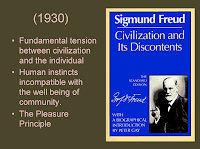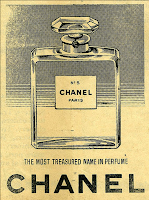Making Connections & Establishing a Research Question
Aims Drawing connections between theory and practice.
Using deconstruction & pastiche techniques.
This session will help establish my research question.
Deconstruction
Jacques Derrida observed a tendency in western philosophy and critical theory to 'create dualistic oppositions and install a hierarchy that unfortunately privileges one term of each dichotomy (presence before absence, speech before writing. and so on)'
Derrida created 'deconstruction' which is a mode of questioning these assumed hierarchies and structures.
Like many theories and texts that enveloved from structuralism/post-structuralism (Barthes, Baudrillard, Fauccault etc) in the 1970's & 80s. Derrida thinking was disseminated through universities and art schools in Europe and the US.
Uses semiotics to understand these aspects.
'Design, Writing, Research' Lupton and Miller 1996:
Ellen Lupton explores aspects and methods of deconstruction and how it had an impact on Graphic Design Practice.
Ellen Lupton's interpretation of Jacque Derrida.
Graphic Desin specific.
Not based on philosophy and critical thinking.
'Deconstruction, like critical strategies based on Marxism, feminism, semiotics and anthropology. Focuses not on the themes and imagery of its objects but rather on the linguistic and institutional systems that frame there production'
'Deconstruction asks how representation inhabits reality'
'Western culture has been governed by such oppositions as reality/representation, inside/outside, original/copy and mind/body. The intellectual achievements of the west have valued on side of these pairs over the other'
'Deconstruction attacks such oppositions by showing how the devalued concept inhabits the values'
The devalued part of opposition already exists within the valued part, devalued part gives balance and substance to the valued part.
'Derrida assured that an intellectual system built on the opposition between reality and representation has in face depended on representation to build itself'
Our ability to be a human being our identity is based on a foundation of language.
Something that has exists before us.
One of the oppositions that factors significantly in Derrida's discussions is that of speech/writing where speech is privileged over writing 'speech draws on interior consciousness, but writing is dead and abstract'
Reality is described within representation.
Post-structuralist on language. Focuses on visual word and image rather than spoken language.
Writing is dead.
'The spoken language itself shares writings characteristics alienation from interior consciousness, since its function depends on the repeatability of signs and thus on a split between thought and expression'
Casting doubts.
If writing is but a copy of a spoken language, typography is a mode of representation even farther removed from the primal source of meaning in the mind of the author.
Speech/writing - writing/typography - seeing/reading.
Swiss opinion, the written word is more important than the design. The design is only a method of function so the reader can understand what is delivered.
Typography supported context. Inhibits the written word.
Design and typography work at the edges of writing, determining the shape and style of letters, the spaced between them, and there placement on the page. Typography from its position at the margins of communications has moved away from speech.
Digital or analogue typography is within words however you look at it. So typography is important in communication o f language.
Alan Hori expects the reader to work to understand the message.
Challenges the traditional presentation of function outlined by the swiss.
Using abstract textures and manipulations distortion is presented in the layout to subvert the written word, use the design aesthetic to try understand whats going on.
'Deconstruction shows us that typographic adjustments can impact grateful on the meaning of the written word'
GLAS by Jaques Derrida (designed by Richard Eckersley)
Deconstruction within typography and layout.
Academic text for Academic people designed by an Academic published within a University.
Highlights the role typography plays within the communication of written words.
The Telephone book by Avital Ronal (designed by Richard Eckersley)
Highlighted rivers within the typography causing illegibility.
House of Leaves.
Uses layout to emphasize certain aspects of the story.
Mother was in a mental hospital so aesthetics & layout suit this message.
All examples demonstrate book layout in a synthesized outcome relevant to the text and communication within the books content. Layout and aesthetics relevant to concepts.
Pastiche
Strange & Stranger demonstrates Pastiche in some of there work, referencing history and the past through aesthetic references. If the concept fits then this is a good way to go about things.
Styles adopted from the past, giving it historical significance in a modern day market.
Other examples:
Movie poster's denote the concept of the film through there aesthetics, if its a historical film they will hint at Pastiche idea's.
Soap & Glory branding, referencing 1940's & 50's.
Stealing aspects to give off this aesthetics.
Keep calm & carry on reinterpretations.
Forming a research question.
To help form my question this set of parameters will help define a more solid question with potential contextual and visual exploration.
What is the general theme? (Editorial, printmaking, typography)
My general theme is Branding, I want to progress in this area due to it having lots of sub categories to explore & create a relevant brand image. I can experiment with a lot of methods, materials and process's within these ares to create diverse outcomes that fit the concept and reflect the product or services of the company through a successful well informed brand image.
These sub-categories that can be explored and used in relevant situations to create a brand image are:
Typographic considerations & typography design.
Print based media outcomes.
Digital & web based outcomes.
Editorial and publication design.
All the above can be analyzed within an essay format while aiming towards influencing a practical project deriving from influence of the essay.
What are the current/contextual/historical issues of the general theme (Do Mind maps & Lists)
How to communicate a brand image across multiple Target Audiences.
Target Audiences personas when considering the target market of the brand and how to communicate the intended product or service through the branding.
Age, culture, social issues, hobbies & interests.
Pastiche & how it is used to communicate historical elements.
Connotations & semiotics.
Fine line between producing consumerist work and ethical work when branding a company.
What do I want to know or be able to do in regard to this theme?
Look into how movement's like The Bauhaus influences these specialist sub categories (Like typography design, layout etc) within the brand image process.
Along with other supporting movements that had specific influence on each sub category within the process of a branding project.
Learn from, compare and contrast historical branding and modern day branding identifying how things have changed in the way a message is communicated through consideration of target market personas (age, hobbies & interests, culture, social, political issues), connotations & semiotics through conceptual visual & contextual elements within a branding project.
What makes a successful brand and what makes a bad brand image, learn from there mistakes and what they did well.
Where branding came from and what its original intentions were.
How pastiche is used to brand something historical in a contemporary way to help influence my practical work.
Form this into a question that has focus towards a conclusive point
How do you construct a successful brand image?
This would be a good question to base an essay on, it would allow me to look into what makes a good brand and what makes a bad brand analyzing historical, contemporary, contextual and conceptual influences within the brand image. Not only would this provide an interesting essay it will also influence my own practice.
As mentioned the question would allow me to look into the influences of brands and re-brands, meaning I can identify and look into specific moments that provide influence on the project along with potentially learning how different methods of design (editorial, typography, digital etc) can benefit certain aspects of a brand image.
Analyzing what makes a good brand and a bad brand and focusing on one brand in detail will allow me to explore its many conceptual, contextual, aesthetic & historical influences rather than branching out into other areas in detail and losing focus on the original purpose of the essay question "branding".
Potential practical projects will be influenced by the essay and the anysis of what makes a good brand image and carried out over a potential rebrand of something that may be unsuccessfully branded or maybe just a rebrand of a product or service that I have interest in or has creative potential.
How does this relate to my practice (Or my progressing speciality area of practice)
Answering this question in an essay response will help influence my design practice within the branding sector which is a current and growing area I want to specialize in at the moment basing live briefs and extension of projects around creating brands and producing design work that fits across a whole brand image.
It will also give me the opportunity for an open brief, a blank canvas on producing a branding project on whatever subject, product, or service experimenting with whatever mediums, materials, methods & process's with support from what I have learnt in the essay.







































